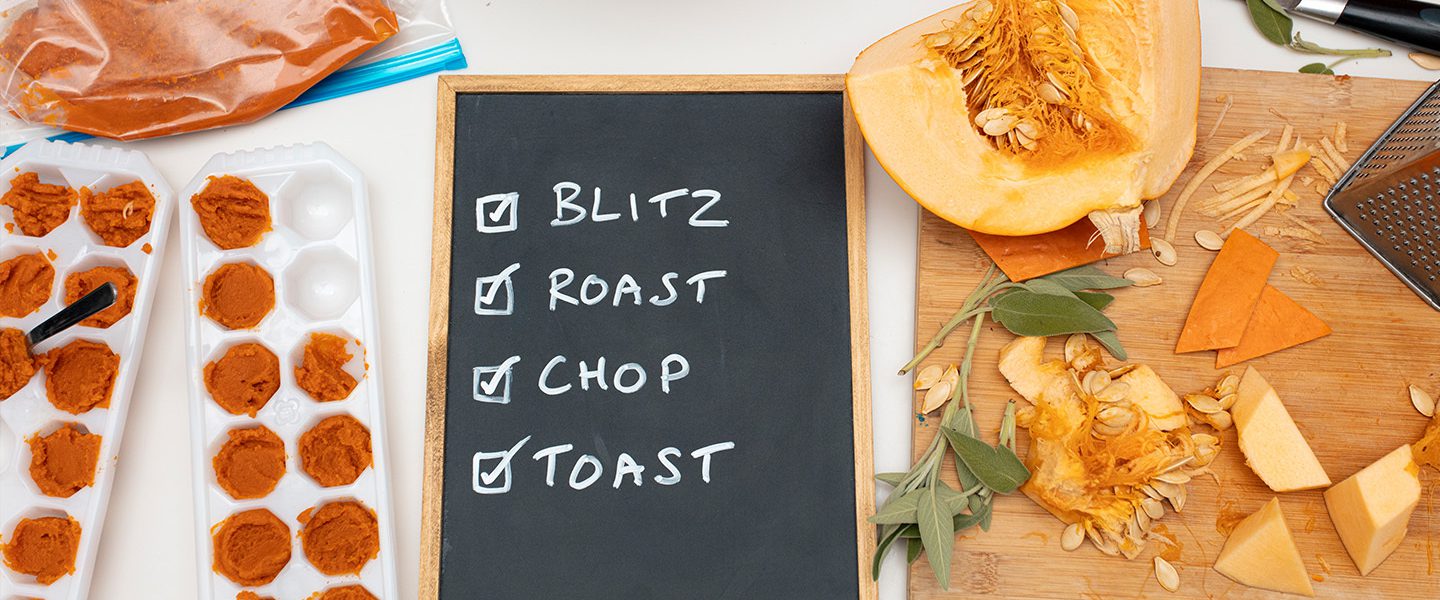How to eat your pumpkin
Looking for a scare this Halloween? Here goes: millions of pumpkins will be bought this Halloween and left uneaten, going to waste.
Pumpkins are so much more than just Halloween decorations. They're tasty, versatile, cheap, nutritious, delicious, grow abundantly in the UK, and can be cooked a thousand ways. Yet, a scary number are thrown away uneaten every year!
These tips are part of something bigger. At Hubbub, we want to see a world where everyone makes choices that are good for the environment. Check out what we do and how your actions add up.
Which pumpkins can I eat?
You can eat any variety of pumpkin. Varieties vary wildly in taste. Explore, enjoy and revel in the fact that a pumpkin is not just for Halloween.
Whilst you can eat any variety of pumpkin or squash, if it tastes very bitter, stop eating. This bitterness is a sign of high levels of cucurbitacins which occur very occasionally and can make you unwell.
Can I eat carving pumpkins?
You may have seen pumpkins in shops labelled ‘carving pumpkins’. Don’t let the sticker lead you astray, these pumpkins are perfectly edible. However carving pumpkins have been bred to be large, thin fleshed and robust. Their taste depends on where you purchase your pumpkin. We’ve eaten some good carving pumpkin and some carving pumpkins that, quite frankly, taste of nothing. Carving pumpkins tend to be more watery and fibrous than other types. We’d recommend popping your carvings from a ‘carving pumpkin’ in a soup with a flavoursome stock cube or adding them to bulk up a stew.
Which part of the pumpkin can I eat?
You can eat all of the pumpkin - except for its stalk. Whether you can eat the skin or not depends on the variety. Smaller varieties such as onion squash have deliciously edible skin, the skin of larger varieties may be too tough to eat or less than appealing. For types such as the butternut squash, whether you eat the skin or not is down to personal taste. Pumpkins are a great source of vitamins A and C, iron and riboflavin.
This is the part attached to the skin. Peel away the skin and you’ve got a hunk of the good stuff. The flesh of big pumpkins is perfect for soups and curries. The flesh of smaller pumpkins, squash and gourds is best suited for pies, breads and cakes - although it’s also delicious in a soup. Smaller pumpkins tend to be more flavoursome, less fibrous and less watery. Remember this when shopping and you’ll be away. There’s no reason not to carve a range of squash and gourds. Variety is the pumpkin spice of life.
Yes, you can use that stringy slimy stuff in the middle of the pumpkin: put it in a pan with plenty of water, and boil it to make a thin broth. Strain the broth, then mix it with apple or orange juice and mulling spices for an aromatic autumnal warmer. You can also use pumpkin broth as a base for soups. Just add carrot, celery and other vegetable trimmings.
Don’t throw away those seeds. They are not only tasty with soups and salads and a convenient snack they are also a wonderfully nutritious food that's very rich in zinc. They also contain plant compounds known as phytosterols, and free-radical scavenging antioxidants, which can give your health an added boost. Simmer them in salted water for 10 minutes and then bake in a hot oven until brown.
Storing a pumpkin
When carving your pumpkin, scrape out the insides and steam (or blanche) these bits of pumpkin flesh and freeze them for another day. Steamed pumpkin flesh and raw pumpkin flesh will last a few days in the fridge.
Once your carved pumpkin has been sitting around a while, its face will start to droop and you can’t safely eat it. An uncarved pumpkin will last quite a while. They are best stored in a cool dry place on top of a towel. When a pumpkin goes bad, it will first begin to get soft on the bottom and then start leaking liquid.
Disposing of a pumpkin
Sometimes you just can’t save ‘em all. Especially if your Jack O Lantern is beginning to look little down in the mouth. If you can’t eat your pumpkin, at least do the decent thing and get him to a compost heap, or in your food waste caddy.
Getting dressed up this halloween?
Check out how to make a DIY costume that won't spook the planet.
Want to save more money on food?
Find out how you can make the most of the food you buy so that you don't have to spend more than you need to.
